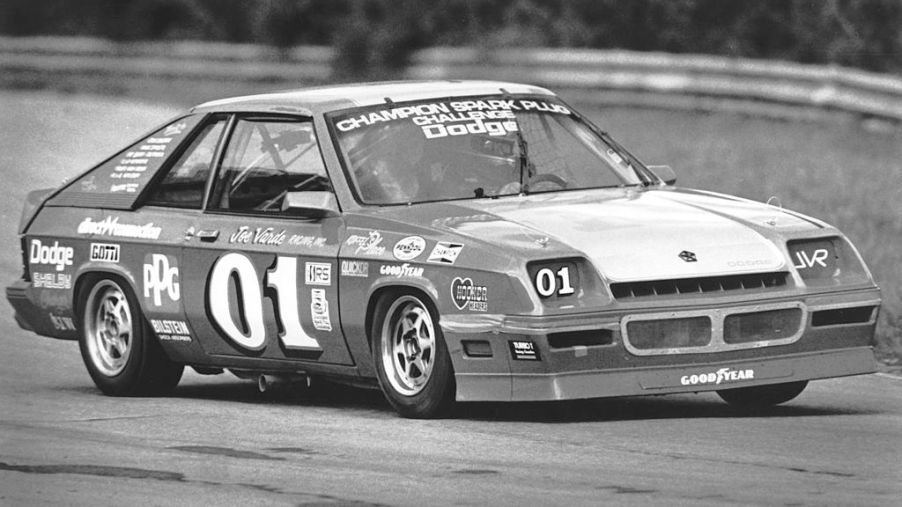
The Dodge Shelby Charger’s Short Lifespan Is a Tragedy
When you hear the name Carroll Shelby, you might think of the blazingly fast Ford Mustang GT500 or the powerful Ford F-150 that is associated with his name. Or, you might be reminded of Matt Damon’s portrayal of Shelby in the critically praised movie Ford v Ferrari.
But did you know the automotive designer and racer partnered with Dodge to create a high-performance, front-wheel-drive production car? Kurt Ernst of Hemmings.com writes about the sadly short-lived Dodge Shelby Charger, a car that helped to change the way American buyers thought about production performance cars.
How the Dodge Shelby Charger evolved
The first-generation Dodge Charger rolled out of production for the 1966 model year. It was a midsize fastback with rear-wheel drive. Engine options consisted of a range of big V8 engines plus one inline-six engine.
During the late ’60s and the early ’70s, Chrysler changed the Charger’s body style to a hardtop. During this time, it gained true muscle car status during these years.
In the mid-’70s, however, Chrysler tried to transition the Charger into the luxury car market by modifying its body style to resemble an executive sedan. The number of available engine options dropped to just three V8s. It somehow had morphed into an upscale but very bland luxury car.
The fifth-generation Charger turned out to be quite different, but it took five years for its transformation. Chrysler tweaked the popular Dodge Omni, a subcompact powered by a 1.6-liter inline-four engine. The 1979 Omni 024, a sportier three-door hatchback coupe with front-wheel drive, had the same engine as the original.
Buyers weren’t taken with the first few model years of the Omni 024. But in 1981, Chrysler brought back the Charger nameplate with a reintroduction of the car with a Charger 2.2 performance package that included a hood scoop, a rear spoiler, and a 2.2-liter inline-four that made 84 hp. Chrysler also bumped up its available horsepower to 94 hp.
To up its game, Chrysler then tapped Carroll Shelby to bring his magic touch to the Charger. And the 1983 model year marked the launch of the first Dodge Shelby Charger. What made the Shelby Charger a new kind of muscle car?
The specs that set it apart
Shelby laid out tough requirements for his Dodge Charger. Good handling for this front-wheel-drive car was paramount. It had to look distinctive. And it needed to perform competently.
The car Chrysler produced exceeded Shelby’s requirements. His Chrysler team boosted the 2.2-liter engine’s compression that increased power. They installed a slightly bigger camshaft that made more horsepower at higher RPMs. The exhaust was opened up to allow the engine to breathe. The team also slowed the cam’s timing to optimize top-end performance.
The result was an engine that churned out 107 hp and 127 lb-ft of torque. To give the Shelby Charger even more juice, the team minimized the ratios on the car’s manual five-speed transmission. The improved Charger reached a top speed of 117 mph. It clocked a 0 to 60 mph time of 9.0 seconds and finished the quarter-mile in 16.8 seconds at 82 mph.
Shelby’s team enhanced the car’s handling by installing a more responsive quick-ratio power steering system. The Charger had lightweight aluminum wheels that were wrapped in radial tires with tallish sidewalls. The team also added vented front disc brakes and rear larger drum brakes.
A more advanced suspension system made for better handling too. MacPherson struts and shorter, stiffer coil springs supported the front suspension, which was a step up from the other Charger models. The rear suspension was the same as the one on the stock Charger.
The Shelby touch showed up in the car’s styling as well. Additions that signaled the car’s sportiness included an air dam in front, side skirts, chunky C-pillar covers, and a small rear spoiler. Wide silver racing stripes completed the look.
For the 1985 model year, Shelby and Chrysler gave the car a power boost by adding a multi-point injection and a T3 class turbocharger. The Charger pumped out 146 hp and 168 lb-ft of torque. It now reached a top speed of 124 mph and did 0 to 60 mph heat in 7.8 seconds.
Why the Dodge Shelby Charger was discontinued
Buyers liked that the Dodge Shelby Charger offered something a little different. In its first year, Chrysler sold over 8,000 of them. And while this is a drop in the bucket compared to the 121,000 Mustangs that Ford sold in the same year, it still showed that some U.S. buyers wanted a hot hatch.
Sadly, the Shelby Charger story was cut short because Chrysler decided to stop production in 1987. It chose to focus on the larger Dodge Daytona and twin sibling the Chrysler Laser.
That same year, about 1,000 Dodge Charger models were produced for sale in dealerships, and Shelby bought another 1,000. His company converted them to Charger GLHS models that produced 175 hp and 175 lb-ft of torque and had a 0 to 60 mph time of just 6.95 seconds.
The Dodge Shelby Charger emerged at a time when buyers were ready for an American-made high-performance hatchback. Some weren’t ready to settle for European hot hatches like the Mini Cooper and the Volkswagen Golf GTI. But Carroll Shelby provided a unique spin on the American sport hatchback, the likes of which we might not see again for a long time.


